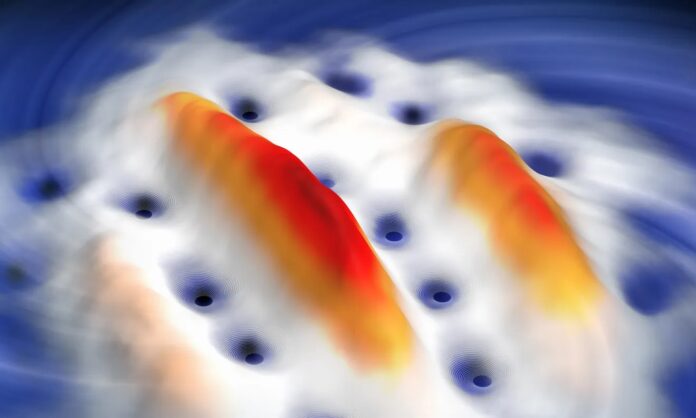Vortices are ubiquitous in nature. This is also the case in the quantum world. These quantum vortices are considered a strong indication of superfluidity, the frictionless flow of a quantum gas.
Now, quantum vortices have been observed in dipolar gases for the first time. Such vortices are a clear indication of the frictionless flow of a quantum gas – the so-called superfluidity. The study was conducted by a team of quantum physicists from Innsbruck, Austria and led by three-time ERC laureate Francesca Ferlaino.
Quantum vortices have yet to be proven for dipolar quantum gases with densely linked atoms. Scientists have created a novel technique.
Manfred Mark from Francesca Ferlaino’s team said, “We use the directionality of our quantum gas of dysprosium, whose atoms behave like many small magnets, to stir the gas.”
To do this, the scientists subject their quantum gas to magnetostriction, which causes the gas’ initial round, pancake-shaped shape to be elliptically deformed. This concept, simple and effective, came from a theoretical proposal made a few years ago.
Lauritz Klaus, the first author of the current paper, said, “If it spins fast enough, then small vortices form in the quantum gas. This is how the gas tries to balance the angular momentum. At sufficiently high rotational speeds, peculiar stripes of vortices form along the magnetic field. These are a special characteristic of dipolar quantum gases and have been observed for the first time.”
According to scientists, the new method could be useful in studying superfluidity in supersolid states in which quantum matter is simultaneously solid and liquid.
Klaus said, “It is indeed still a major open question the degree of superfluid character in the newly discovered supersolid states, and this question remains very little studied today.”
Journal Reference:
- Klaus, L., Bland, T., Poli, E. et al. Observation of vortices and vortex stripes in a dipolar condensate. Nat. Phys. (2022). DOI: 10.1038/s41567-022-01793-8
